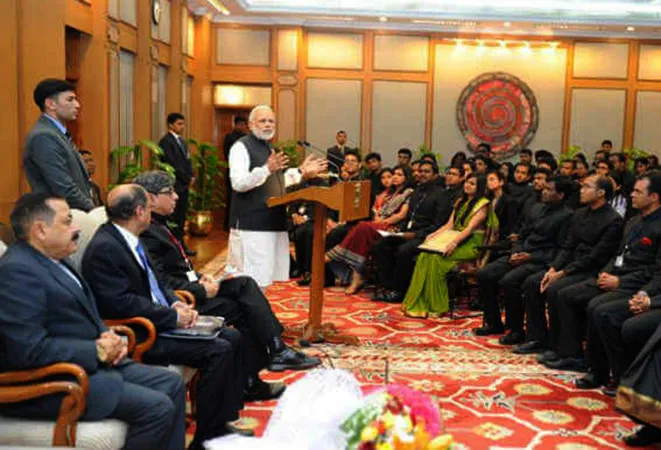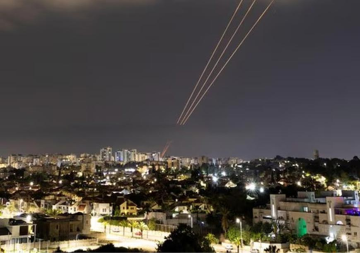
Mission “Karamyogi”, the Modi governments first stab at public sector capacity development, was unveiled during the pandemic in September last year—a reminder that whilst the rest of us worked languidly from home, bureaucratic wheels continued to churn albeit with reduced physical presence.
The name of the Mission derives from the Bhagawad Gita—a lively, ancient, masterclass on morality and duty—and means “one who helps others without self-interest”; an apt description for the ideal bureaucrat.
Sadly, the public impression of the bureaucracy remains uncharitable as a colonial left-over, far removed from either the “healing touch” required during distressing times like the present or the urgent needs of a modern economy. Of course, structural constraints also severely inhibit the holy grail of public service reform. The Mission document mentions “silo functioning” as a problem. But a far more serious malaise is the floating population of those who rule us, hopping departments and ministries seamlessly as promotion prospects dictate.
The top echelon of the bureaucracy remains a finely honed but nevertheless, generalist cadre, both in the Union and state governments. They occupy positions reserved for them—not via competitive selection, but through a veiled process of allocation by the government.
The top echelon of the bureaucracy remains a finely honed but nevertheless, generalist cadre, both in the Union and state governments. They occupy positions reserved for them—not via competitive selection, but through a veiled process of allocation by the government.
Unless competitive pressure for jobs is brought to bear on all officers—irrespective of the cadre silos which monopolise positions, change can only be marginal. The economic dictum that monopolies are expensive and ineffective applies to public human resource allocation systems as well.
It would be instructive to learn from the ineffectiveness of the late 1980s push for capacity building under the then Prime Minister Rajiv Gandhi and Minister for Personnel and Training PC Chidambaram. The training was unrelated to the task at hand and more often used to acquire “vanity” skills for aspirational jobs of the future—personally elevating for the officer concerned—but of questionable immediate value to the department.
Capacity building is an expensive proposition. Even a minimal two weeks of training every five years—either in one shot or over time digitally—diverts the officer away from work. The cost of time thus spent comes to of INR 85 billion (four percent of the wage budget) for 3.1 million Union government employees in position MOF 2018-19. Add to that the cost of the programme on the supply side of INR 5 billion and the total comes to INR 30 billion over five years. Not unaffordable, if it enhances output. The test would be if civil service employment were to reduce by 10 percent at the end of five years demonstrating higher efficiency.
The Mission does well to propose defining a specific “role” for each position with an identified activity list, which would link into the skills needed and thence to the capacity gap and in future feed into recruitment/appointments. An attempt was made during the waning years of the UPA2—sadly too little too late—to make the annual appraisal process more quantifiable rather than discretionary. It lacked however, process redefinition and the bottom line of a hard budget constraint on HR resources—a prerequisite for incentivising accurate annual assessments. If the existing dilatory processes continue along with the accompanying surfeit of human resources, as is often the case, the perverse “live and let live” environment is difficult to end.
Role definition can also provide some tangible link with outcome budgets, which have been prepared since 2007-08 IDSA 2011 and despite their many constraints, specify outputs and outcomes to link results with effort.
Role definition can also provide some tangible link with outcome budgets, which have been prepared since 2007-08 IDSA 2011 and despite their many constraints, specify outputs and outcomes to link results with effort. If each output is linked backwards to the activity sets of specified positions, performance budget outcomes become an available metric to triangulate the effectiveness of the Mission.
iGOT, the proposed digital, knowledge platform is the most exciting aspect of the Mission. Also welcome is the continuing association of domestic IT major Infosys with the government, which started with the “Aadhar” Unique ID Authority of India, led by Nandan Nilekani from within the government, nearly a decade ago. A Task Force has been constituted under the ex-CEO of Infosys Mr. SD Shibu Lal to oversee the establishment of a government-owned special purpose vehicle—“Karamyogi Bharat”—which will own a customised digital training platform and functionalise integrated public HR planning and management.
Mr. Shibu Lal was the last of the Founder CEOs of Infosys (2011-14) and whilst his tenure was rocky, he had the entrepreneurial courage to make Infosys step out of its comfort zone of providing back-office support at cheap rates – a dwindling business strategy looking ahead—and into the more creative segments of artificial intelligence and cloud computing, an initiative continued thereafter under the first “outsider” CEO, Vishal Sikka.
The institutional arrangements for implementing the mission are ambitious. A Public Human Resource Council chaired by the Prime Minister will consist of Chief Ministers, other ministers and experts as the apex decision making body. This is an extension of the “cooperative federalism” principle initiated by the GST Council.
In a welcome departure from the norm of departmental dominance, the Council will be serviced by a Capacity Building Commission—its constitution is unclear but hopefully it will induct outside talent. It will standardise pedagogy and methodology, supervise Central Training Institutions, and recommend annual capacity building plans and policy interventions. The inclusion of Chief Ministers and references to a pan-Indian application in the Mission documents, suggest the Commission might have statutory responsibility beyond the Union to the State government civil services.
Will these institutional changes drive civil servants to play to their assigned “roles” rather than the “rules”? This is not the first time that positive change is sought to be initiated via the “soft” capacity development route. Admittedly, the Modi government is more committed and tenacious in implementing its plans and that will certainly help.
Switching “rule bound” behaviour into “role oriented” action requires training to be combined with structural changes to define professional roles better. Of the 3.1 million filled civil service positions, 28 percent are in production, commercial or engineering functions—all prime candidates for “Agencification” or corporatisation. Another 31 percent are in the para-military police, security, and intelligence services mostly in field operations.
Switching “rule bound” behaviour into “role oriented” action requires training to be combined with structural changes to define professional roles better. Of the 3.1 million filled civil service positions, 28 percent are in production, commercial or engineering functions—all prime candidates for “Agencification” or corporatisation
The task is much smaller and more defined than aggregate numbers suggest. Only 0.3 million positions relate to core civilian functions. Of these 88 percent are in low skill jobs, most of which are redundant, if re-engineered or digitalised processes are adopted. That leaves just 0.09 million high skills and another 0.04 million medium skills positions. It is within this core that key civil service roles need to be identified along with contracted in domain experts, working in reprocessed frameworks, open to all stakeholders.
Past avatars of civil service reform, in developing country democracies, drew inspiration from Singapore. More recently during the noughties, Tony Blairs “service delivery unit” which was meant to ensure his re-election, provided the model for Malaysia and democracies in Africa, as a “quick win” path for enhanced efficiency. Mission Karamyogi is billed to have Indian roots, as the name suggests. This is sensible. The best solutions are always found through “chintan” (reflection) from within. Mr SD Shibu Lal knows this well, from his time at Infosys.
The views expressed above belong to the author(s). ORF research and analyses now available on Telegram! Click here to access our curated content — blogs, longforms and interviews.




 PREV
PREV


